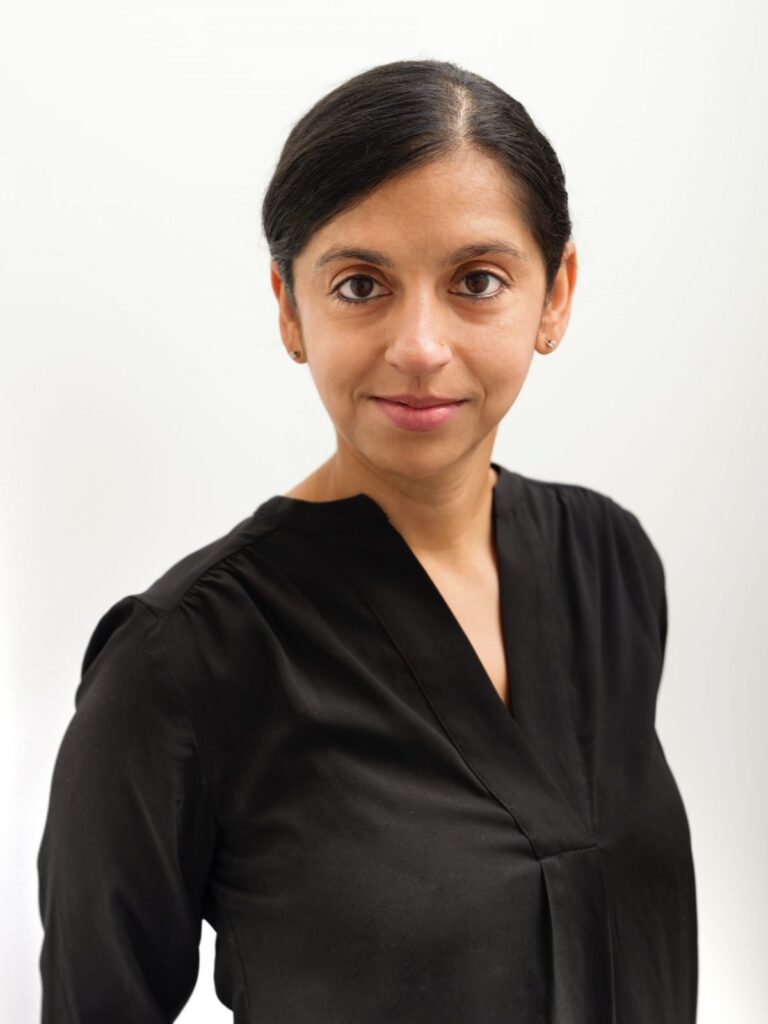Over the last few years, Medi-Cal — California’s version of Medicaid — has been on the national front lines of reducing health disparities impacting Californians of color.
Palav Babaria, deputy director of quality and population health management at the Department of Health Care Services (DHCS), spoke with EMS about some of the state’s more glaring health disparities, and how the historic transformation of Medi-Cal has helped bridge the gap.
Reducing inequity
“There are two major ways we’re approaching health equity,” said Babaria. “One, we’ve been tracking disparities, especially by race and ethnicity, for over a decade now, and setting bold, measurable goals to reduce them. But reporting on inequity is not enough to change it, so we’ve also been expanding access through CalAIM.”
CalAIM, short for California Advancing and Innovating Medi-Cal, is a multi-year effort to reduce health disparities through new services like street medicine, home accessibility modifications, medically tailored meals, sobering centers and housing support including rent aid, tenancy navigation, transitional housing and daily living skills training.

Medi-Cal is also providing waivers for many of these services to Californians who may not otherwise qualify for them.
To reduce maternal death and illness from conception through 12 months postpartum, Medi-Cal has developed a Birthing Care Pathway coordinating services across various areas of members’ lives; for instance, doula care, nutrition aid and mental health screening.
“We’ve been centering members themselves in how we design these programs,” Babaria said. “As of 2024, all our medical plans in each county are required to have an Advisory Committee that includes community members and Medi-Cal members, and we kicked off a quarterly state-level Member Advisory Committee in 2023 … so the people experiencing health disparities can tell us how the system needs to change to better meet their needs.”
“Our health care system is good when you’re urgently sick and you show up to the emergency room or the hospital; people generally have their needs met. What our general health care system is really bad at is preventing people from getting sicker,” said Babaria.
“Many people, for example, may not have a regular primary care provider screening them for diabetes and counseling them before they develop diabetes or have an amputation,” she continued. “The purpose of our tracking is to identify who’s at risk of getting sick before that happens to keep them well with preventive visits, and the purpose of these new programs is to address the social drivers of health, to improve the overall outcome of interrelated needs like diabetes, high blood pressure and depression.
“Altogether, that’s called population health,” said Babaria. “The concept has been a focus for Medicaid nationally for the last decade or so, but the data to be able to look at how we’re doing at a statewide level has sometimes been lacking,” said Babaria. “Nationally, we’re definitely on the leading edge.”
Medi-Cal is tracking much of its progress through its 50×25 initiative, a CalAIM campaign launched in 2022 to reduce disparities and improve care by 50% in three areas: children’s preventive health, maternity care and behavioral health, which includes mental health and substance use disorder.
Disparities in these areas vary between counties and races, but some goals like Asian and Hispanic or Latino youth preventive care visits and immunizations are already met, while other goals like maternity care for Black and Native American women are nearly met.
The goals where disparities remain high include prenatal depression screening, which has a statewide rate of 10% against a goal of 15%, although some regions like southeastern and far northern California have rates as low as 3%, or are unreported altogether.
Disparity also persists for substance use disorder engagement and follow-up for an emergency department substance use disorder visit, with a statewide rate of 7% against a 14% goal for treatment and a 16% statewide rate against a 24% goal for follow-up.
However, these metrics were last reported in 2021 and 2022. An update with more recent data measuring the progress of Medi-Cal since then is expected this August.
Listening sessions
“There’s a common saying in the healthcare world that every system is perfectly designed to get the results that it produces, and we know that our current system isn’t working for some of our members,” said Babaria.
To hear directly from members experiencing this inequity, Medi-Cal also launched its three-phase, five-year Health Equity Roadmap Initiative.
For the first phase, begun in November 2023 and now complete, DHCS staff held 11 listening sessions hosted by community-based organizations statewide, to listen to hundreds of Medi-Cal members about the challenges that prevent them from getting the health care they need — particularly for members from communities of color, those with disabilities, those in rural areas and those with behavioral health issues like substance abuse disorder.
“The most resounding, consistent piece of feedback we got is that it’s really hard to navigate and access all of the different Medi-Cal programs,” she added. “Sometimes it’s because there are weeks- or months-long wait times for appointments, or members haven’t updated their contact information and we don’t know how to reach them, or sometimes it’s because we just have a very complicated health care system and our members don’t know that dental, maternal or behavioral health services are even available.”
“We got a lot of requests for more behavioral health services, and that’s a nationwide phenomenon,” said Babaria. “We don’t have as much capacity as the demand, especially after the pandemic, when we saw a lot more people having issues with mental health or substance use needs … and we experienced provider shortages, especially those who could speak members’ native language, and often in rural areas and smaller counties.”
To expand information accessibility, Medi-Cal has set translation and interpretation requirements in 18 threshold languages for health plans in all counties in California.
Threshold languages — including Arabic, Chinese, Korean, Russian, Spanish, Tagalog and Vietnamese — are the primary language of 3,000 members or 5% of the member population in a county, whichever is lower.
As of March 2024, non-enrolled Californians newly eligible for Medi-Cal spoke mostly English (197,469) and Spanish (125,722), with the next-highest being unreported (10,834) and Russian-speaking members (3,893).
“In Phase 2, we’re taking what we’ve heard from members in the listening sessions and figuring out what solutions look like,” said Babaria. “Often, state health care policy is developed with providers and advocates, but members getting these services are not at the table. We want to do a co-design process where members themselves identify our biggest priorities,” said Babaria. “In Phase 3, we’ll turn those priorities into a timeline of goals we can measure.”
“If you want to close health disparities, you can’t do that without the people most affected by it being at the table and having a voice in the process. We’re at the beginning of that journey,” she added. “Having these communities guiding our process at the local level is how we’re going to make sure that we see measurable changes down the road.”




